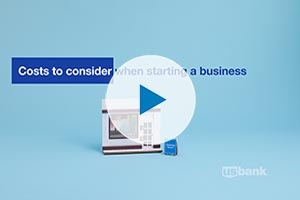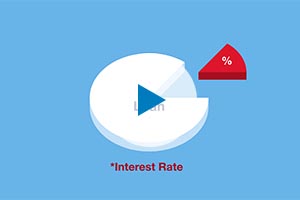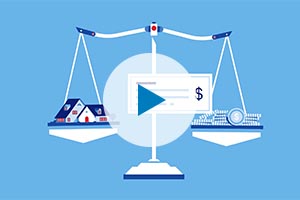
3 signs it’s time for your business to switch banks

Changes in credit reporting and what it means for homebuyers

What’s the difference between Fannie Mae and Freddie Mac?

Common small business banking questions, answered

Leveraging the ASC-842 rule changes in equipment lease accounting

How liquid asset secured financing helps with cash flow

Renewing your custody contracts? Negotiate the fees.

Key considerations for launching an ILP

Alternative assets: Advice for advisors

An investor’s guide to marketplace lending

What is a CLO?

Beyond Mars, AeroVironment’s earthly expansion fueled by U.S. Bank

Refinancing your practice loans: What to know

ABL mythbusters: The truth about asset-based lending

Common pitfalls to avoid in the equipment financing process

Finance or operating lease? Deciphering the legalese of equipment finance

Buying or leasing? Questions to ask before signing a contract

What type of loan is right for your business?

Collateral options for ABL: What’s eligible, what’s not?

When small companies buy big: The potential of asset-based lending

Can ABL options fuel your business — and keep it running?

Maximizing your infrastructure finance project with a full suite trustee and agent

How to maximise your infrastructure finance project

How to choose the right custodian for your managed assets

10 ways a global custodian can support your growth

Evaluating interest rate risk creating risk management strategy

A simple guide to set up your online ordering restaurant

Cashless business pros and cons: Should you make the switch?

ePOS cash register training tips and tricks

Addressing financial uncertainty in international business

Higher education and the cashless society: Latest trends

4 ways Request for Payments (RfP) changes consumer bill pay

Protecting cash balances with sweep vehicles

Tech lifecycle refresh: A tale of two philosophies

Why retail merchandise returns will be a differentiator in 2022

4 benefits of independent loan agents

At your service: outsourcing loan agency work

Middle-market direct lending: Obstacles and opportunities

What corporate treasurers need to know about Virtual Account Management

Streamline operations with all-in-one small business financial support

Opening a business on a budget during COVID-19

How to fund your business without using 401(k) savings

Costs to consider when starting a business

The different types of startup financing

How to get started creating your business plan

How to establish your business credit score

Small business growth: 6 strategies for scaling your business

Healthcare marketing: How to promote your medical practice

How business owners are managing during the supply chain crisis

How to expand your business: Does a new location make sense?

6 common financial mistakes made by dentists (and how to avoid them)

Unexpected expenses: 5 small business costs to know and how to finance them

Technology strategies to complement your business plan

Business credit card 101

Meet your business credit card support team

How to apply for a business credit card

How jumbo loans can help home buyers and your builder business

How a small business is moving forward during COVID-19

Prioritizing payroll during the COVID-19 pandemic

When to consider switching banks for your business

5 tips to help you land a small business loan

How Everyday Funding can improve cash flow

Leverage credit wisely to plug business cash flow gaps

8 Ways for small business owners to manage their cash flow

How to make the most of your business loan

Break free from cash flow management constraints

5 tips for managing your business cash flow

Investing in capital expenditures: What to discuss with key partners

Do I need a financial advisor?

Gifting money to adult children: Give now or later?

Financial steps to take after the death of a spouse

6 tips for trust fund distribution to beneficiaries

Resources for managing financial matters after an unexpected death

Student checklist: Preparing for college

Webinar: Uncover the cost: College diploma

The A to Z’s of college loan terms

Co-signing 101: Applying for a loan with co-borrower

Practical money skills and financial tips for college students

How I did it: Paid off student loans

Is online banking safe?

Personal loans first-timer's guide: 7 questions to ask

Common unexpected expenses and three ways to pay for them

Dear Money Mentor: How do I set and track financial goals?

30-day adulting challenge: Financial wellness tasks to complete in a month

Your financial aid guide: What are your options?

Is a home equity loan for college the right choice for your student

Parent checklist: Preparing for college

How to apply for federal student aid through the FAFSA

Be careful when taking out student loans

Everything you need to know about consolidating debts

How to use debt to build wealth

What’s a subordination agreement, and why does it matter?

Understanding the true cost of borrowing: What is amortization, and why does it matter?

7 steps to keep your personal and business finances separate

Your quick guide to loans and obtaining credit

Dear Money Mentor: What is cash-out refinancing and is it right for you?

Overcoming high interest rates: Getting your homeownership goals back on track

What are conforming loan limits and why are they increasing

Money Moments: How to finance a home addition

How I did it: My house remodel

First-time homebuyer’s guide to getting a mortgage

Dear Money Mentor: When should I refinance a mortgage?

What is a home equity line of credit (HELOC) and what can it be used for?

Is it the right time to refinance your mortgage?

What to know when buying a home with your significant other

What is refinancing a mortgage?

These small home improvement projects offer big returns on investment

Should you get a home equity loan or a home equity line of credit?

Webinar: Mortgage basics: What’s the difference between interest rate and annual percentage rate?

Webinar: Mortgage basics: What is refinancing, and is it right for you?

Webinar: Mortgage basics: Prequalification or pre-approval – What do I need?

Webinar: Mortgage basics: How much house can you afford?

Webinar: Mortgage basics: How does your credit score impact the homebuying experience?

Webinar: Mortgage basics: Finding the right home loan for you

Webinar: Mortgage basics: Buying or renting – What’s right for you?

Webinar: Mortgage basics: 3 Key steps in the homebuying process

Is a home equity line of credit (HELOC) right for you?

How to use your home equity to finance home improvements

How do I prequalify for a mortgage?

Can you take advantage of the dead equity in your home?

8 steps to take before you buy a home

6 questions to ask before buying a new home

4 questions to ask before you buy an investment property

10 uses for a home equity loan

Test your loan savvy

How I did it: Deciding whether to buy an RV

Car shopping: Buying versus leasing your next vehicle

Take the stress out of buying your teen a car

Questions to ask before buying a car

What you should know about buying a car

How to choose the best car loan for you

